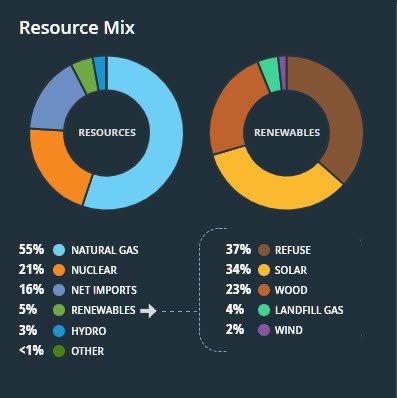Vineyard Wind breaks Ground in Hyannis
Work has begun on Vineyard Wind, the first commercial-scale offshore wind farm in the United States. Slated to start providing energy by the end of the year, Vineyard Wind will be comprised of 62 wind turbines about 12 miles off the coast of Nantucket. Once the turbines are operational, Vineyard Wind, a joint venture by the energy companies Avangrid and Copenhagen Infrastructure Partners, will provide Massachusetts with over 800 megawatts of renewable energy, enough to power over 400,000 homes.
Vineyard Wind has primarily been working onshore so far, constructing substations in Hyannis and laying the cable that will eventually bring the wind farm’s energy to the mainland. Construction was halted by a strike for almost a week starting on May 26 after Vineyard Wind failed to meet demands from the predominantly Black local longshoremen’s union.
Though contracts guaranteed that at least 500 jobs created by Vineyard Wind would be filled by local staff from Bristol, Plymouth, Barnstable and Dukes counties, the longshoremen’s union was excluded from those contracts by obscure federal labor law restrictions and forced to negotiate separately. Years later, with many essential positions already filled and only a dozen union members employed—all in part-time positions—the longshoremen, with support from other local unions, shut down operations the day after the first wind turbine parts arrived. Work resumed June 1 after Vineyard Wind reached an agreement with the longshoremen to provide seven full-time jobs, over a dozen part-time positions, and training for union members.
“We’re excited for offshore work to begin,” said Andrew Doba, a spokesperson for Vineyard Wind. “Throughout the year, we’re going to be hitting a lot of major milestones that will propel the industry forward into the future.” Doba also told a local NPR affiliate that the temporary shutdown will not significantly affect the project’s timeline.
As the first installation of its kind, Vineyard Wind is breaking new ground for the industry, which Doba thinks has a lot of room for growth. The Inflation Reduction Act, signed into law by President Joe Biden last August, provides tax credits for offshore wind project developers and manufacturers. Several states have their own provisions that make offshore wind appealing, such as Massachusetts’ goal to solicit and contract for 5,600 megawatts of offshore wind power by 2027. While bills like the Inflation Reduction Act won’t impact Vineyard Wind, as construction has already begun, Doba was still glad to see the government invest in the burgeoning industry.
Resource mix for ISO New England as of 2022, according to ISO New England
“As the first project in the nation, anything that benefits the industry is a big step forward,” he said.
Nantucket will also benefit from the project, as the island is set to receive $34.4 million in restitution for potential historical, cultural, and economic impacts, including $16 million in the next eight to ten years. The money will be used to fund a wide array of projects from climate adaptation and coastal resilience to infrastructure and tourism. Some of the money will also go to historic preservation and restoration, and island non-profits will also receive portions of the funds. The first $4 million has already been received. Barnstable will also receive $16 million in restitution, plus property taxes on the onshore land Vineyard Wind is using.
Offshore wind produces 99% fewer carbon emissions than fossil fuels and is also cheaper. The wind farm will prevent more than 1.6 million tons of carbon emissions each year and save over $3,700 million in energy costs over its lifetime.
However, many local residents worry that these environmental benefits mask the project’s environmental costs, most notably the danger it might pose to critically endangered North Atlantic right whales. Nantucket Residents Against Turbines, which goes by ACKRATs, argues that Vineyard Wind has failed to sufficiently protect right whales and that the government agencies responsible for permitting it were derelict to do so. ACKRATs sued to block the project, claiming it violates the Endangered Species Act and the National Environmental Policy Act. But on May 23, the lawsuit was dismissed by a District Court judge.
Scientists have found no link between wind turbines and whale deaths, and the Court found that the relevant studies did not support ACKRATs’ claims. Environmental advocates argue that the real dangers to right whales lie elsewhere and wind turbines do not pose a significant risk. Vineyard Wind plans to implement broad protective measures approved by the Natural Resources Defense Council, the National Wildlife Federation, and the Conservation Law Foundation. Recently, Vineyard Wind entered into a collaboration with Charles River Analytics, a Cambridge-based research firm, to use an advanced artificial intelligence object detection system to further reduce the risk posed to wildlife.
Both Avangrid and Copenhagen Infrastructure Partners have plans for future projects in the area, but right now, getting Vineyard Wind operational is the primary goal. “From the Vineyard Wind standpoint, we’re just focused on this project,” Doba said.




